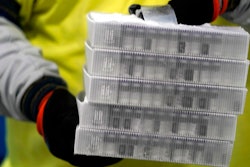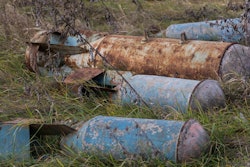
There is no question that COVID-19, with skeleton crews and offsite workers, has put pressure on plant operators to focus more heavily on the need for clear, concise communications among teams during shift handovers. Shift-to-shift communications is key to plant and worker safety which, if done correctly, mitigates risk and production interruptions.
Even years before the added pressure of the pandemic, a severe incident at the BP Texas City oil refinery in 2005 resulted in 15 deaths, 180 injuries, caused serious damage to the structure, created long-term environmental issues, and resulted in millions of dollars lost to the company. The final review of the incident by regulatory authorities noted that poor shift-to-shift communication contributed significantly to the accident.
Fifteen years later, communications during shift handovers is still an issue. Research conducted by the 451 Group in January 2020 asked 300 senior executives representing the chemical, pharma and petrochemical derivatives process industries, what percentage of safety incidents occurred during their tenure were a direct or indirect result of communication breakdown between shift teams, senior staff and supporting incidents. Most respondents cited safety incidents tied to communication breakdowns. More than 60% said up to 25% of incidents fell into that category, and 20% said up to half of incidents were due to these communication failures.
Implementing Best Practices Across the Board
The challenge among many manufacturers is just how to instill best practices in team communications, how to best structure the way teams communicate and how to make sure the 15 minutes or so of handover time is used effectively.
The 451 Group report concludes that it is clear among the IT and OT executives that there is a need for digital instrumentation and a more organized and communicative environment.
This reality can happen when digital technology is deployed. It enables the connected worker in the control room, in the field, on the plant floor, to access to a single source of truth where everyone in the plant (and at home) has access to the same information at the same time, which naturally creates a standardized communications stream to enable fast responses to identified problems.
Accountability is also increased with decentralized data capture. Electronic records, with signatures and escalation workflows, are essential to maintain smooth operations and to mitigate risks or safety issues. This also alleviates the unwieldy paper logs that often are not as up to date as they need to be to assure quality and safety.
The Importance of the Human Factor
It is a promising sign that digitization is on the upswing in all types of manufacturing operations with sensors to record vast amounts of data and information. Yet the human factor cannot be ignored. Embracing new technologies at all levels can be a challenge to workers with varying levels of experience, especially if large amounts of data need to be interpreted at the start of a shift without accurately transferring the overall picture of a previous shift. Shift-to-shift communications software enables the sharing of this digital information but it needs to be intuitive and easy to use in order to promote user acceptance across the board.
Having a single platform to provide the most updated information on manufacturing processes and procedures creates not only improved productivity but also an increased safety element. There is no guesswork, no searching to find the correct answer. It’s like one conversation is had by many — resulting in a single source of truth for plant procedures and process optimization.
A Case for Digitized Optimization & Connected Workers
Ascensus, a manufacturer of specialty chemicals for various industries from pharmaceutical to oil and gas and paper and pulp, implemented a cloud-based shift handover platform to better streamline operational effectiveness. The company has multiple shifts working 24/7.
According to Gene Shields, Ascensus Chief Information Officer, safety is a critical issue. “We want to make sure our employees go home in the same condition as they came in,” he noted. “This platform delivered and assures consistent operations and quality through information sharing.”
Prior to full implementation, the company brought together a broad base of people who would be impacted by the software introduction. “You need to understand the problem you’re trying to solve and the people involved in the solution. By including this broader base, you have better success with deployment and acceptance,” Gene added.
The company also wanted to be assured that the software was up-to-date, that the company data would be protected and that it would fit into their overall IT strategy. It also had to be able to grow as the company’s needs increased and that updates could be managed internally.
With the onset of COVID, the digital platform became increasingly important as workers needed to work remotely. By utilizing this approach, workers have been able to collaborate on a shift-to-shift basis, mitigating risks and safety issues.
With the success of this digital transition, Ascensus plans, in 2021, to roll out the solution to another of its sites.
In Summary
Plant safety will always remain a critical issue in manufacturing plant operations. In fact, the 451 Research study indicated that 86% of respondents indicated that they had a previous negative incident in their plant related to lack of communication.
Organizations in the process industry should carefully consider implementing digital technology related to shift handovers if:
- Knowledge gaps/communications silos are inhibiting safety and plant reliability
- Office or collaboration tools are not adequately addressing the needs of 24/7 operations and environments with hazardous operating conditions
- A fragmented tool landscape is complicating handover processes between shift teams and the senior production team
- The benefits of having data contextualized by human operators to enable the next level of machine learning
- There is a need for retention of valuable knowledge of long-term employees to address new workforce demographics
A digital transition of your operations management and shift-to-shift communications may easily fit into your existing IT structure and be a key to worker safety in the plant. Information will be up-to-date and communicated at all plant hierarchies – from the entry-level plant worker to engineers, production managers and the corporate suite, assuring smooth plant operations and importantly, quality, reliability and plant safety.
Andreas Eschbach is the founder and CEO of Shiftconnector, www.shiftconnector.com.























